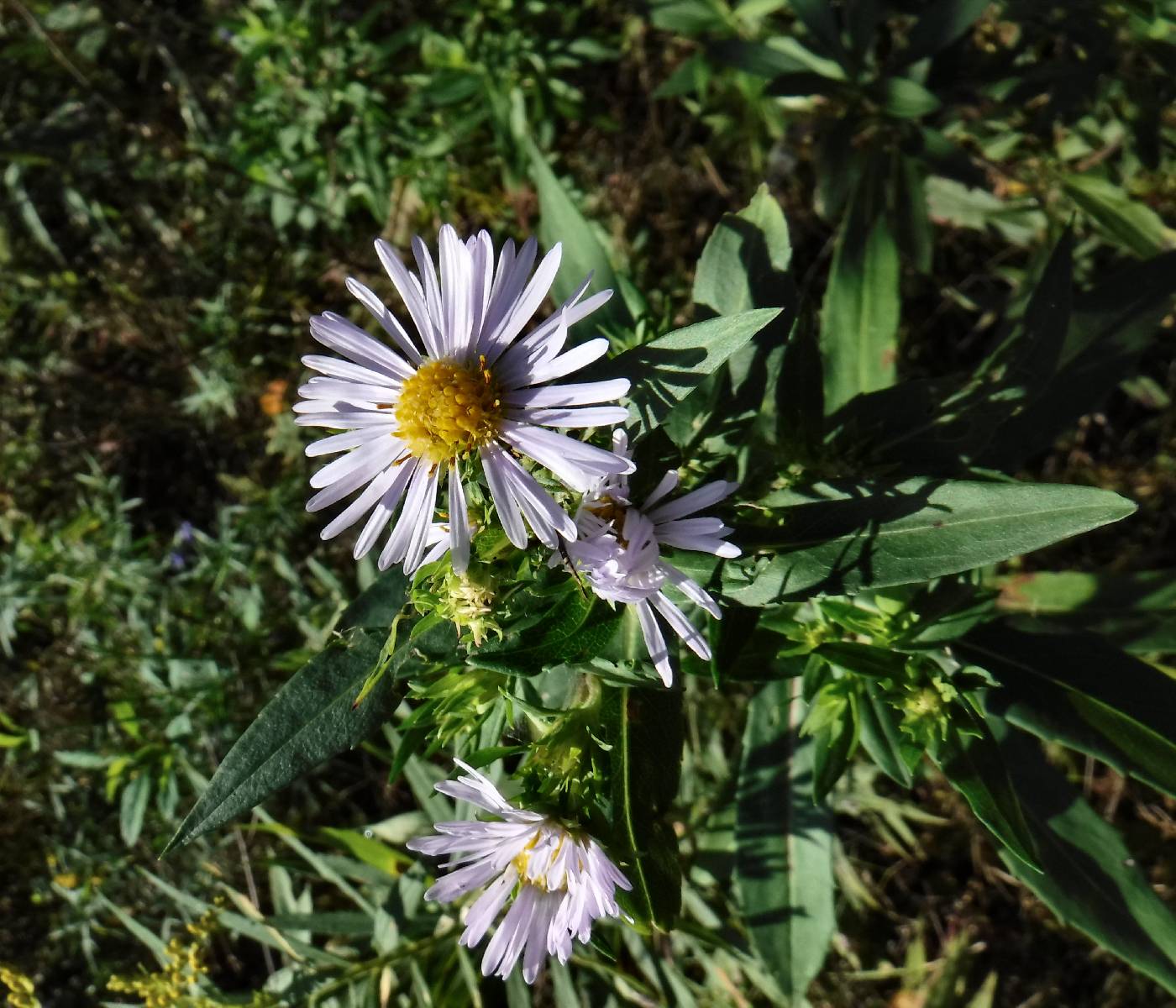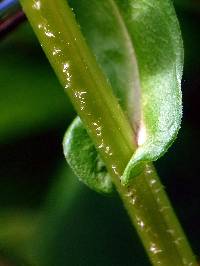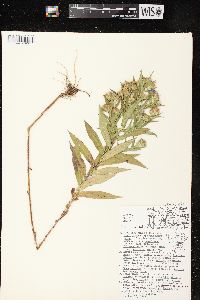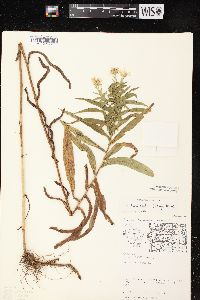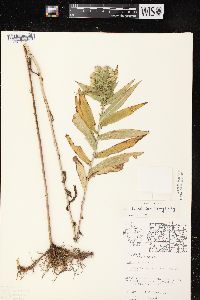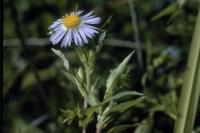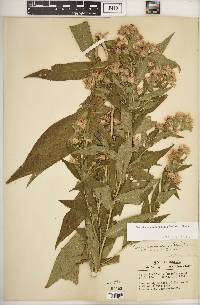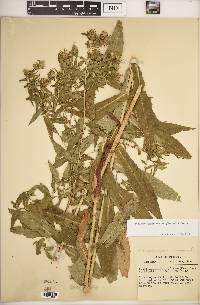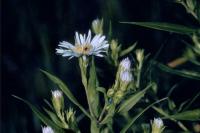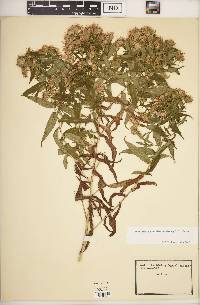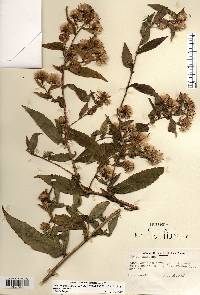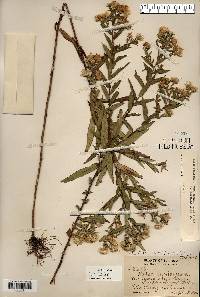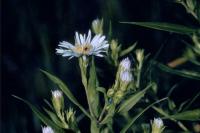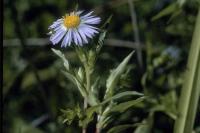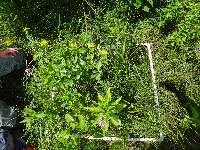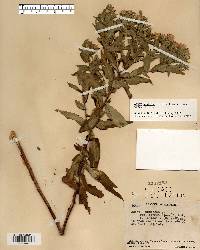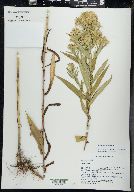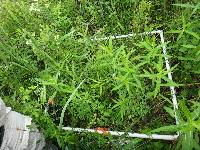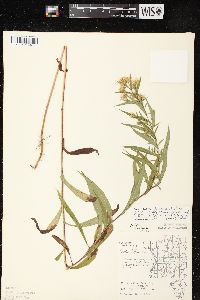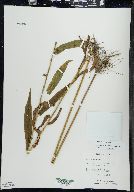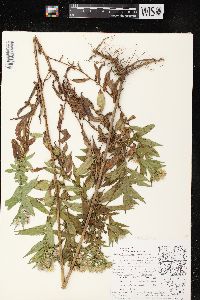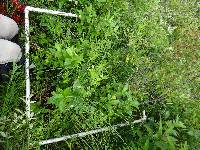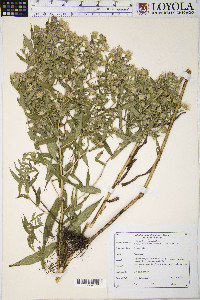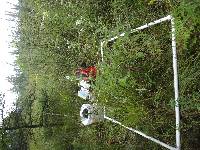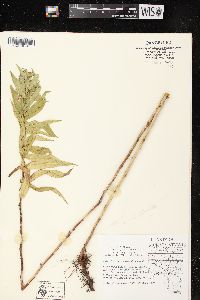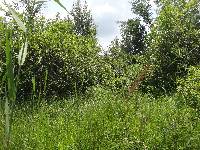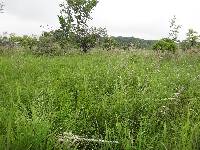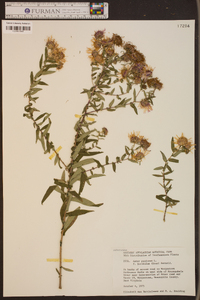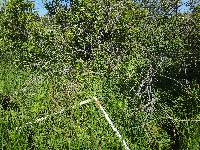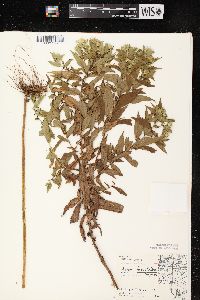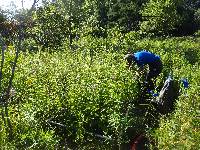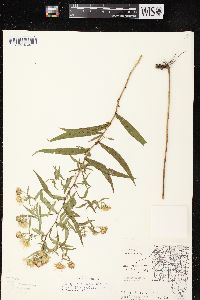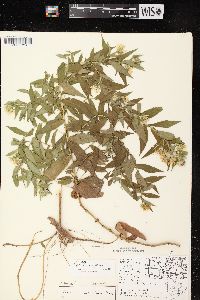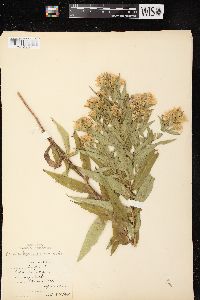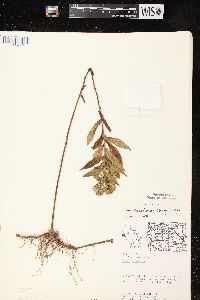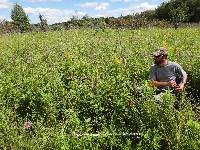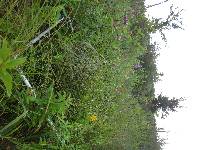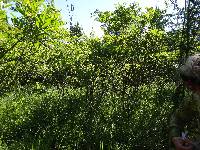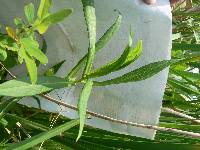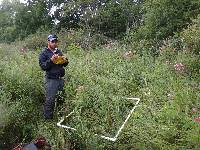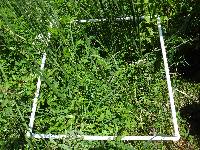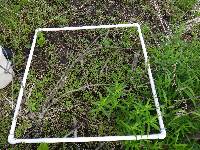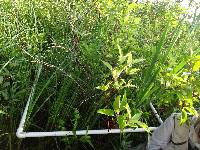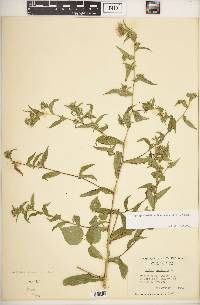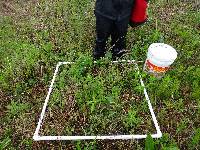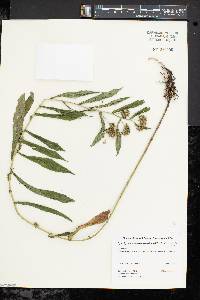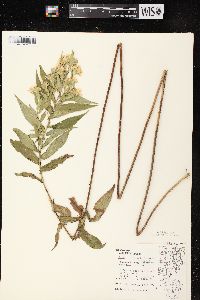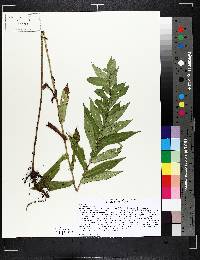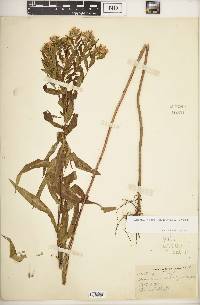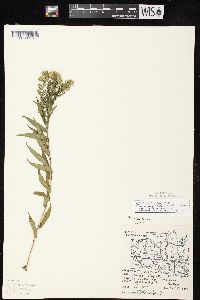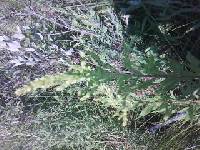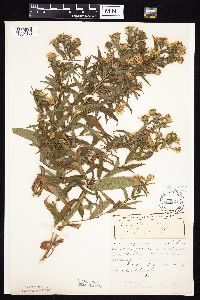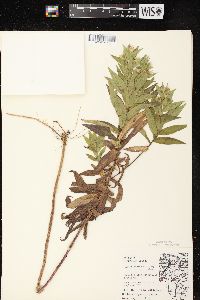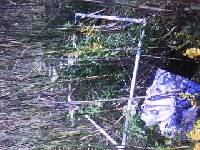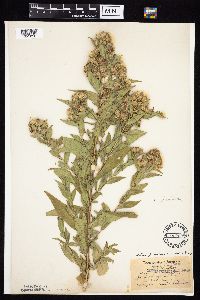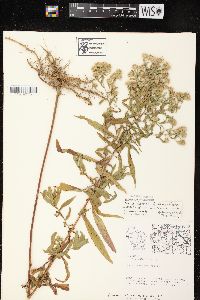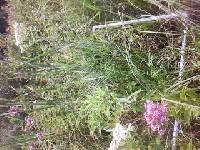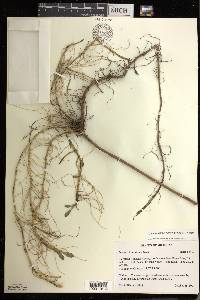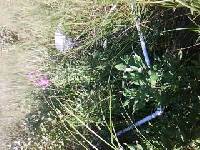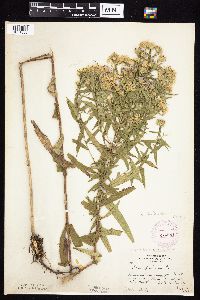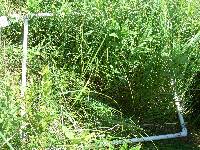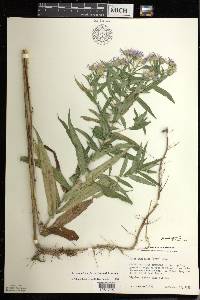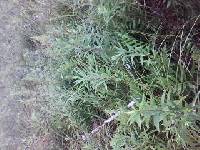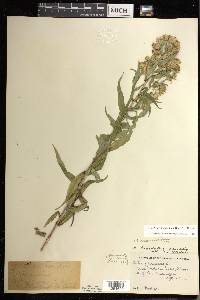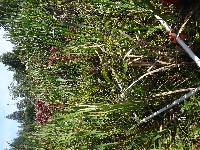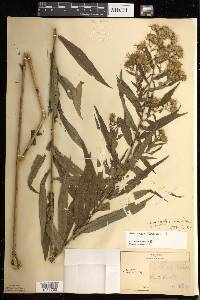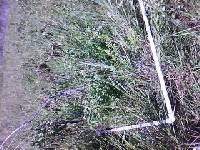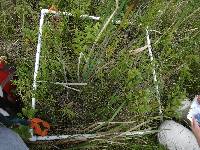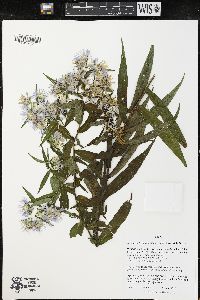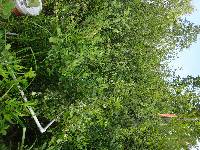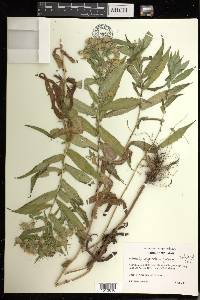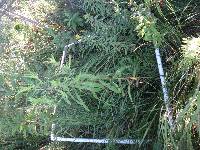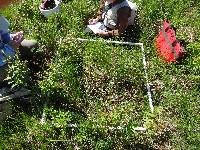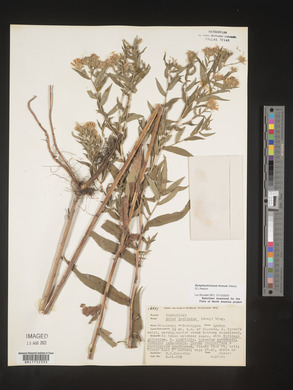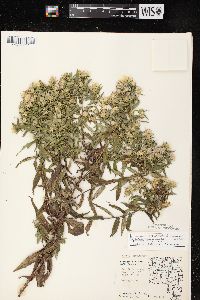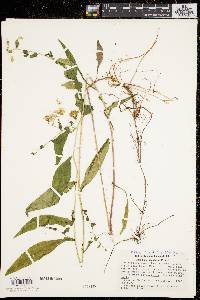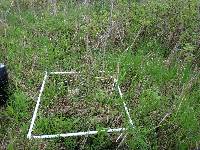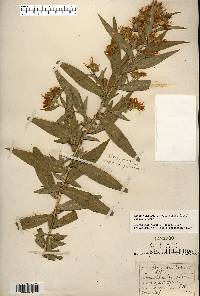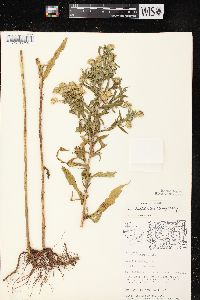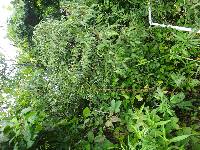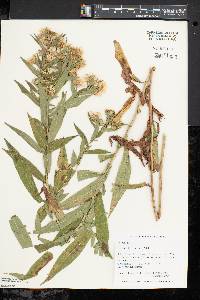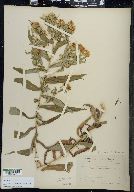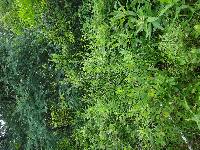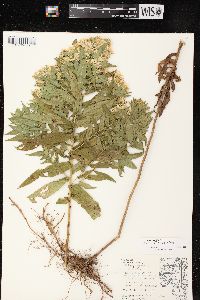Symphyotrichum firmum
|
|
|
|
Family: Asteraceae
Glossy-Leaved American-Aster
[Aster firmus Nees, moreAster lucidulus (A. Gray) Wiegand, Aster puniceus subsp. firmus (Nees) A.G. Jones, Aster puniceus var. firmus (Nees) Torr. & A. Gray, Aster puniceus var. lucidulus A. Gray] |
Perennials, 40-250 cm, colonial; long-rhizomatous. Stems 1, erect (straight, ± thin, 2-8 mm diam at base, ± ribbed, red above each node), glabrous or glabrate (very sparsely hispidulous) proximally to ± hispidulous distally. Leaves (crowded, light green, shiny) firm, margins crenulate-serrate or entire, revolute, apices acute to acuminate, mucronate, abaxial faces glabrous or midveins sometimes with hairs apically, adaxial glabrous; basal withering by flowering, subpetiolate (petioles dilated, winged, sheathing), blades spatulate to oblanceolate, 30-100+ × 3-20+ mm, bases attenuate to cuneate, margins remotely crenate-serrate to subentire, apices acute to rounded; proximal cauline withering by flowering, sessile or subpetiolate (petioles widely winged, clasping), blades oblanceolate, 50-150 × 20-30 mm, greatly reduced distally, bases auriculate, clasping, apices acute to acuminate; distal sessile, blades lanceolate to lance-elliptic to oblanceolate, 40-70 × 10-25 mm, little reduced distally, bases auriculate, clasping, margins entire, apices acute to acuminate. Heads in densely paniculiform arrays, branches ascending, densely leafy (branch leaves often overtopping heads). Peduncles 0.2-3+ cm, glabrous or pilose in lines, bracts 4-6, lanceolate-linear, often subtending heads. Involucres campanulate, 6-12 mm. Phyllaries in 4-5(-6) series, linear-lanceolate to linear, slightly unequal, bases indurate 1 / 5 - 1 / 2 , margins not scarious (outer) to narrowly scarious, erose, hyaline, sparsely ciliolate, green zones linear-lanceolate, outer sometimes ± foliaceous, apices acute to acuminate or long-acuminate to caudate, faces glabrous. Ray florets 20-40; corollas usually blue to pale lavender, sometimes white, laminae 9-18 × 1.0-1.2 mm. Disc florets 30-50; corollas yellow or cream becoming pink or purple, (4.5-)5-6.4 mm, tubes shorter than funnelform throats, lobes triangular to lanceolate, 0.6-0.9 mm. Cypselae purple or brown, obovoid, oblong or oblanceolate, ± falcate, ± compressed, 1.5-3 mm, 3-4-nerved, faces glabrous or sparsely strigillose; pappi white, 5.2-8 mm. 2n = 16. Flowering Aug-Oct. Open, wet soils, spreading into mesic mineral soils, fens, marshes, wet roadsides; 100-400 m; Alta., Man., Ont., Sask.; Ga., Iowa, Mich., Minn., Mo., Nebr. The range of this little known species is badly defined because some specimens attributed to it are in fact white-rayed, glabrate forms of Symphyotrichum puniceum. More work is needed to verify the status of this species.
Similar to no. 5 [Aster puniceus L.], but colonial by long creeping rhizomes; stem and branches puberulent in lines above, glabrous or sparingly hispid below the infl; lvs more crowded, especially upwards, firmer, often shining, entire or nearly so; invol bracts often less attenuate; rays blue or lavender (mostly rather pale) to occasionally white; 2n=16, 32. Moist places; W.Va. and w. N.Y. to Minn., S.D., and s. Mo. (A. lucidulus) Gleason, Henry A. & Cronquist, Arthur J. 1991. Manual of vascular plants of northeastern United States and adjacent Canada. lxxv + 910 pp. ©The New York Botanical Garden. All rights reserved. Used by permission. From Flora of Indiana (1940) by Charles C. Deam This species seems to be restricted to springy and marshy places in the northern part of the state. …… Indiana Coefficient of Conservatism: C = 4 Wetland Indicator Status: OBL |

